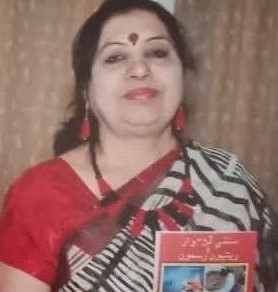
“Sindhi festivals are rooted in the principles of science”, believes Deepa, who is author of two books on the subject.
By Jyoti Mulchandani | Ahmedabad
Shrimati Deepa Mahadev Wadhwani, a Sindhi proud of her roots, lives in Ahmedabad, Gujarat. Born on 23rd March 1952, Shrimati Deepa works untiringly to keep the Sindhi heritage alive. She is part of various Sindhi organizations, wherein she has held prominent posts of the President, the Secretary or the Treasurer. She holds Sindhi bhajan sessions and the reading of the Sukhmani Path to bring about an awareness among the younger generation about their culture. She has written books documenting the Sindhi way of life, one of which is ‘Sindhi Dinh-Vaar Ae Ritiyun Rasmu’ which describes the religious days of the Sindhis and their rituals and customs. A multi-faceted personality, she has acted in Sindhi movies too.
Here is her account of her life and family.
My Family
“My maiden name is Savitri. My paternal grandparents are from Dhabhro, while my maternal grandparents are from Kandiaro, Sahiti pargana of Sindh. My father, Shri Ochiram Relumal Vanjani, passed his matriculation exam in Sindh and was the eldest among his four siblings. He worked in Karachi and since he was educated, the family’s living style was modern and trendy.
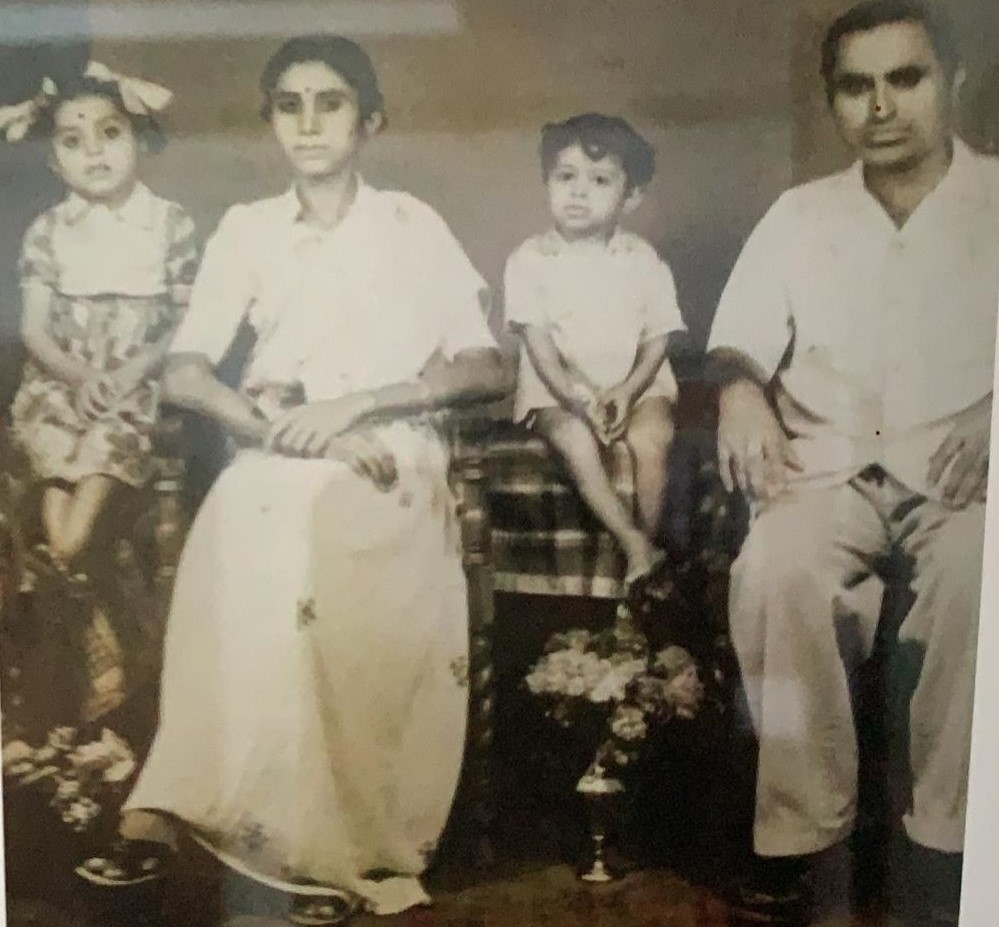
In 1948, after the partition of India, my father sent the family, including his uncles, by ship to India. He was the last from the family to leave Sindh. It was raining very heavily the night before he was leaving, and he had no place to stay. A Muslim brother helped him by sheltering him in his house and my father spent the night there.
The next day, he left by ship for India. He landed at Gateway of India, Bombay. My father realized that Bombay life was too fast for him and decided to go to Rajkot, Gujarat, as some of our relatives were already settled there. He didn’t enjoy the life there too and came to Ahmedabad, Gujarat. He found the city to his liking and called the entire family to settle here.
They stayed in tents put up by the government on the banks of River Sabarmati. He put in a claim for a property in India against what they had left behind in Sindh, and the family got two houses in the Vadaj area of Ahmedabad.
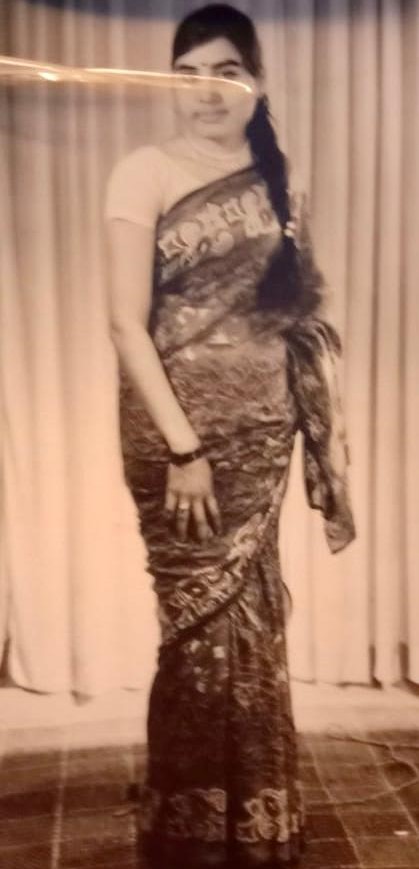
I was born in Vadaj on 23rd March 1952. My father had a job at the High Court at Ghee Kanta. He then got a job at Ahmedabad Electric Company. He liked his job as it helped him use his educational background. We had many financial difficulties, but with the support of my mother, my father faced them all.
We children were growing up, so father bought a bigger house at Kubernagar. My father was a generous, kind and polite man. I was the eldest among the siblings and always stood first in my class. My father had great plans for me. He wanted me to become a doctor and put in all efforts to give me a good education. But the destiny had other plans for us, and at the age of 42, he passed away of cancer.”
“I was 17 and a half years old and had just passed my SSC exams from Mahatma Gandhi High School when my father passed away. I could no longer study and the family needed financial support. Ahmedabad Electric Company offered me a job when I turned 18. In those days, there were IBM punching machines used for entering data in the computer and the company trained me as a punching machine operator. I joined my job in January 1970.
I got married in May 1973 and got busy with family life and had hardly any time for social life. As my children grew older, I started my efforts to revive the Sindhi culture in the community.
My Activities for the Sindhi Community
“Today, it is a trend among the Sindhis to downgrade their language and adapt to other cultures. But I believe that we have to continue our efforts to promote our Sindhi language and heritage in our community. Soon, Sindhis will be proud of their roots and Sindhiyat, if we work upon it.
I gradually joined many Sindhi organizations. At Lion’s Club Ashapali, I was appointed as the President thrice, the Secretary twice and the Treasurer once. I am part of Ellisbridge Sindhi Panchayat which has been active for the last 52 years.
I have performed my duty as a Sindhi at both Kubernagar in the East of Ahmedabad, the place I grew up in, and Satellite in the West of Ahmedabad, the place I have been married in. I am part of various organizations at both places, either as a member or the joint secretary or the president.
I love writing too. I submit articles in Sindhi newspapers and write books too.
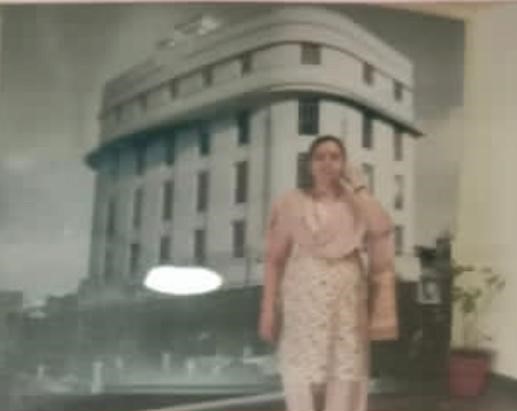
There was a Sindhi Darbar (a place of worship) at Azad Society run by an old man. Once he passed away, his son decided to close down the Darbar as he found it difficult to maintain it along with his family responsibilities.
I was concerned about this situation as there was no other Sindhi tikaana or darbar in the neighborhood. I decided to collect some ten ladies and we started singing bhajans on Chand (the second day of any Hindu lunar month after Umaas, the no-moon night) for 2 hours and ended the session with a prasad. Now it has been fifteen years since we started these sessions. We are 30 members, a limit we have set as the sessions are held at a member’s house and not everyone can accommodate large numbers. We decide the name of the member who hosts the satsang (the bhajan singing sessions) on Chand by a draw system. This way each member gets a turn every 2 and a half years. The entire household of the host also participates and learns the Sindhi bhajans, the ardaas (a set prayer in Sikhism), and the importance of Chand. The singing and chanting also spread positive vibrations in the house.
We also read the Sukhmani Path for two hours every Thursday for the last 25 years.
I am also a part of several Sindhi ladies’ kitty parties which are held at homes or hotels.
We have formed a Sindhi Sakhi Group of Sindhi ladies that meet at the hall provided by Ellisbridge Sindhi Panchayat. We organize entertainment programs for the members and also promote women who run businesses from home.
We have Sindhi family groups too in which we participate with our husbands.
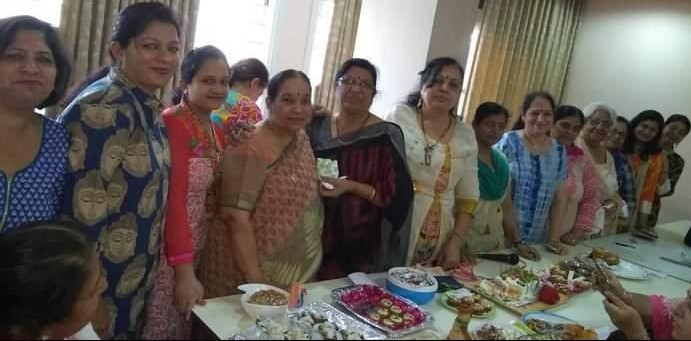
Every first Friday of the month, we perform Mata ji Chowky and sing Sindhi and Hindi bhajans to venerate the Mata (Goddess).
We had held a function celebrating the Golden Jubilee of Ellisbridge Sindhi Panchyat in which we had 50 Sindhi recipes put up by various participants. We had awarded prizes to the three best dishes.
Two Sindhi organizations Vishwa Sindhi Sewa Sangam and Suhina Sindhi, Pune, joined hands to keep our Sindhiyat alive. They have various activities and shows for the community. I joined them recently, but because of the Covid-19 pandemic, I have not been able to contribute much.
I was appointed as the President of the Ahmedabad district by this organization and have been recognized as a part of their Global Membership Team.
I participate in cooking shows on the Sindhi channel too.
I always insist that we speak Sindhi with our children, even if they answer in Hindi or English. Gradually they will start conversing in Sindhi.
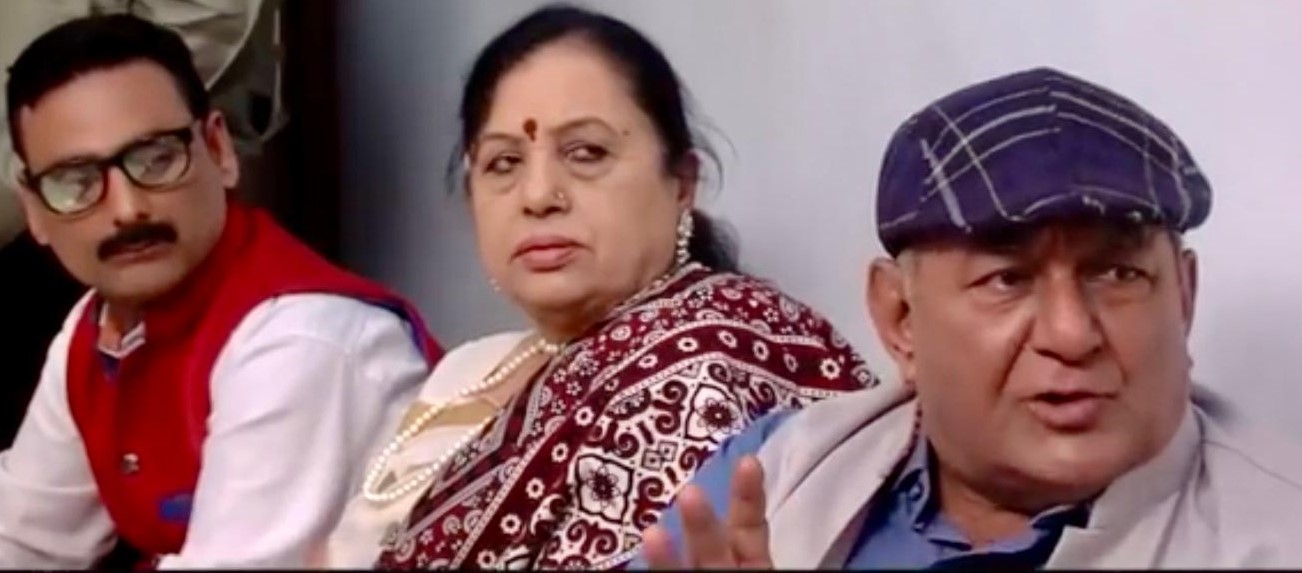
Sindhi Food
We Sindhis enjoy a wide variety of dishes for breakfast, lunch, snacks and dinner. I’ll name a few of them here:
Sindhi Sweets – khorak, all types of khirnis, mohanthal, ladoos, satpuras, chotha, lola, mithi chashni bread, saiyun, malpuro, seero, maae jo seero, gajjar jo seero, mithi gajjar jo seero, kutti.
In Sindh, it was a tradition to send gold guineas on each piece of khorak. Nowadays, we place a 5 or a ten-rupee coin.
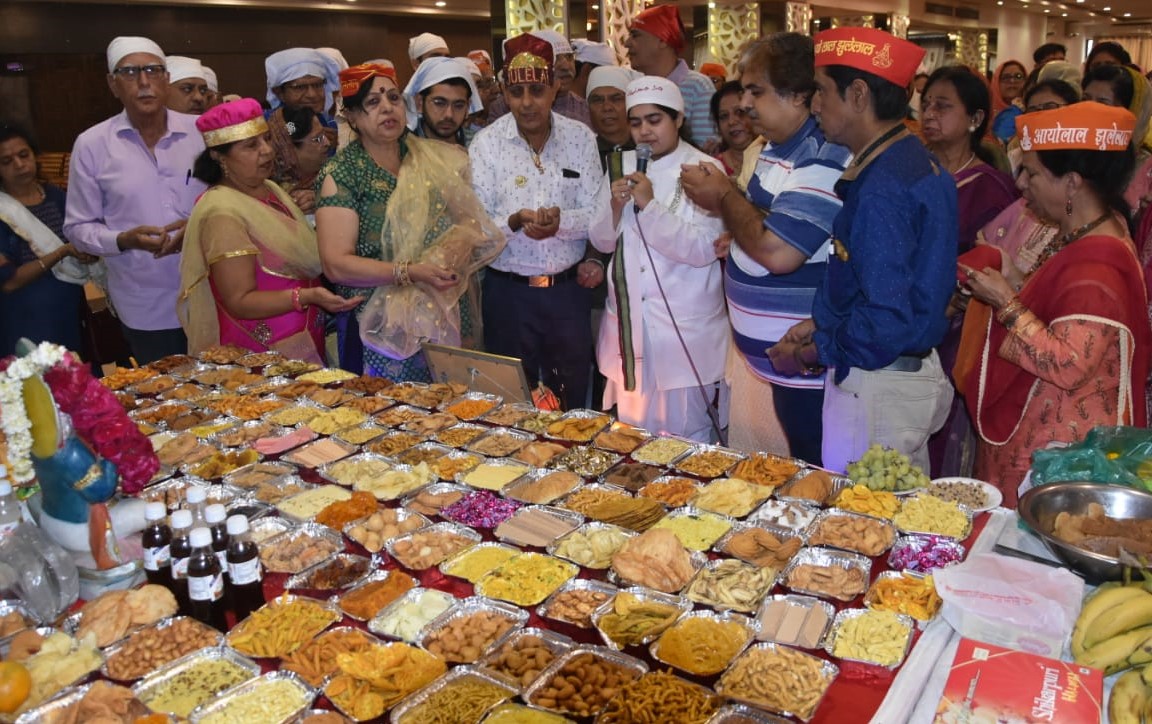
We Sindhis love papads and khatairn (pickles) of gajjar (carrots), ambri (mangoes), bassar (onions) in oil or water. Mango pickles can be meethi khatairn (sweet pickles), saji ambri ji khatairn (a whole mango pickle), khatti khatairn (sour pickle). Mirch ji khatairn (green chilli pickle) and garan mirchan ji khatairn (red chilli pickle) are also enjoyed by the Sindhis.
Our Sindhi murrabbo is also famous.
Sindhi Breakfast – Saiyun patata, bassar wari koki, dai-koki, loon mirchwari koki (salt and pepper koki), meethi koki (sweet koki), meetho lolo, chehro fulko, dal ja parotha, batate ja parotha.
We make bhat (porridge) too.
Sindhi Snacks -sana pakora, mirch, bassar, vaagan and bhee ja pakora, bhee and patattan ji tikki, mixed vegetable tikki
All kinds of Chillas such as besan jo chillo, meetho chillo, chehro chillo, atte jo chillo are also relished.
Puri patata and dal-puri are all-time favorites of the children.
Sindhi Lunch – wadiyun,bheeya patata, ras mein bhajiyun, all types of koftas, bhariyal vaagan, bhariyal karela, bhariyal bhindiyun, seyal bhindiyun, phoolpatasha, macroliyun, sai bhaji, mehan ji bhaji, turin ji bhaji – we add garlic, onion and tomatoes in most of them.
Seyal fulka of Sindhis is well-known. If you have four fulkas and five people to feed, you make seyal phulka. It will be enough to feed all five.
We have different kinds of doda too – Juwar jo dodo, bajriya jo dodo. We make a kutti of the bajri dodas with jaggery and ghee for winters.
In curries, we have besan ji curry and tamate ji curry.
Pulaos and thum mein chawar are the kinds of rice we love.
Sindhi food is rich, tasty and filling.”
My Appeal
“I appeal to all Sindhis to contribute in every way possible for the cause of reviving and promoting our Sindhi language and culture for the younger generation.”
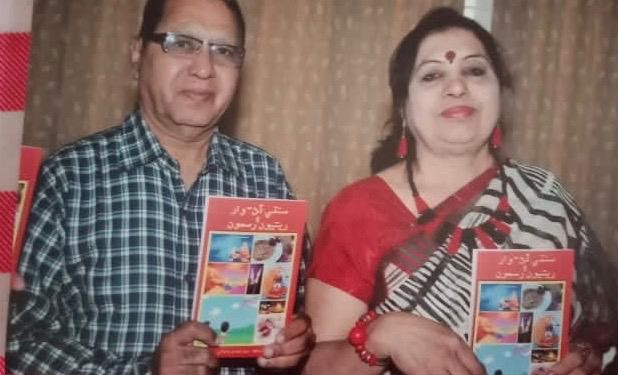
About Her Book
She believes that our Sindhi festivals are rooted in the principles of science. In her book, Sindhi Dinh-vaar Ae Ritiyun Rasmu, she has explained the importance of fasting and the significance of various important days of the lunar calendar.
The book is written in Sindhi-Arabic as well as Sindhi- Devnagri scripts making it suitable for those familiar with either of them. It has a brief introduction to the author and a list of various Sindhi organizations she works with to preserve the Sindhi heritage.
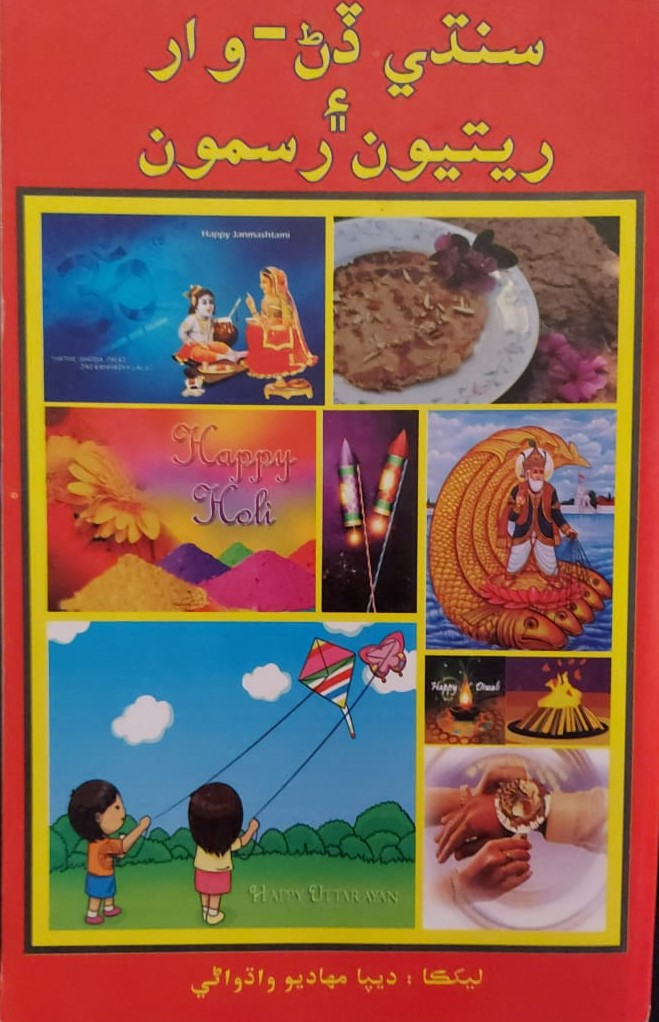
Deepa starts off the book by naming the Sindhi months of the lunar calendar and how they are aligned with the months of the universally used Gregorian calendar – a very important piece of information for those who are not familiar with the lunar months.
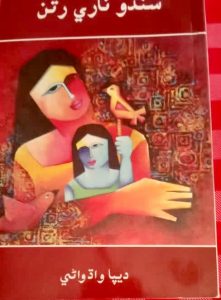
The aartis and bhajans to be sung to venerate Jhulelal – a form of Varun Dev, the rituals followed to worship Him with pallav (a prayer beseeching Jhulelal to shower His blessings on all) and the panjadas which are sung in His praise, are all explained in detail.
The katha (a religious discourse) to be read while observing the Sindhi festivals such as Teejdi, Vadi Satte, Mahalaxmi ja Sagra, Mahadev ja Sagra, Ganesh Chauth, Vispat ji Katha, etc. with the relevant rituals, prayers and aartis are included in the book.
Sindhi follow certain customs during the wedding, the pregnancy and the childbirth, all of which form a part of the book. Each of this event is celebrated with great joy with dancing and singing. The book has many of the Sindhi songs called ladaas that are sung on these occasions. Shrimati Deepa has also added her own take on the ladas. She has written loris (lullabies) for the babies too.
The book is an asset for any Sindhi keen to follow the rituals and customs of the community, and for a non-Sindhi who is curious to learn about Sindhi culture.
___________________
Courtesy: Sindhi Khazana (Published on November 28, 2021)
Pics by Shrimati Deepa Mahadev Wadhwani